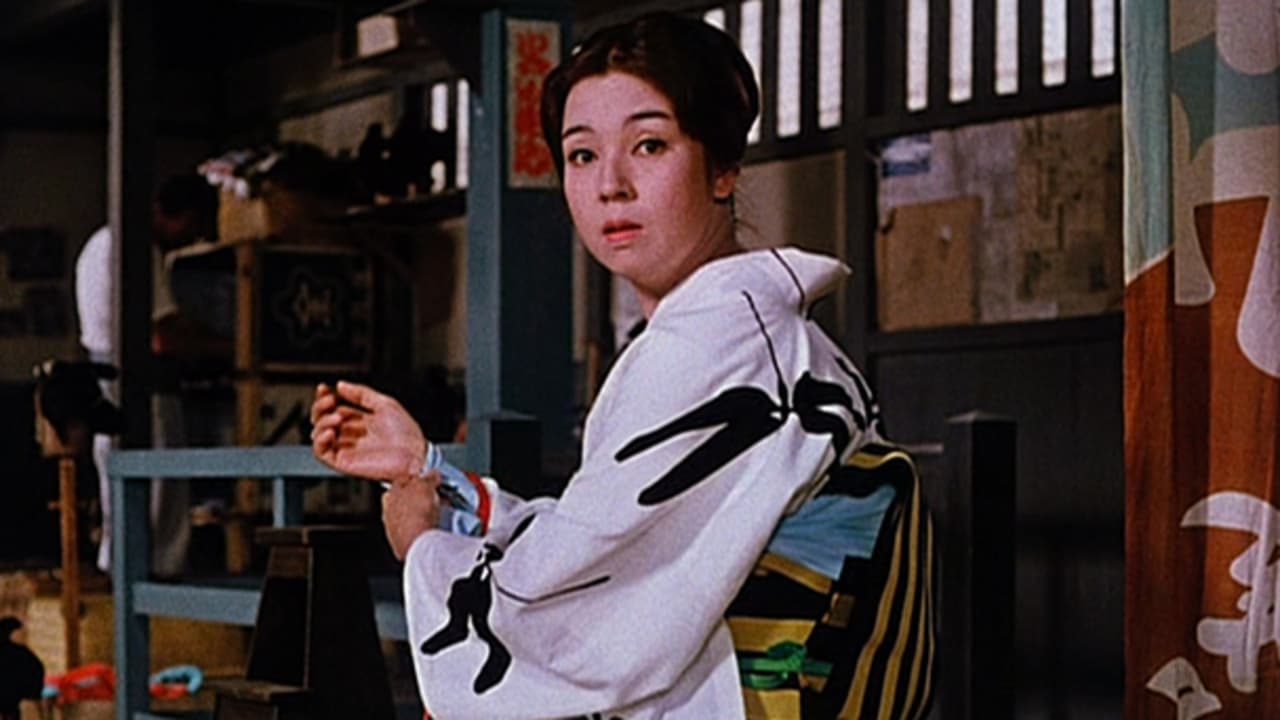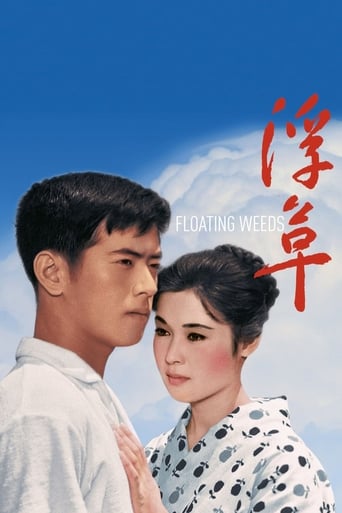

This Movie Can Only Be Described With One Word.
... View MoreSadly Over-hyped
... View MoreI wanted to like it more than I actually did... But much of the humor totally escaped me and I walked out only mildly impressed.
... View MoreThis is a must-see and one of the best documentaries - and films - of this year.
... View MoreViewed on DVD. Restoration = ten (10) stars. Pictorially, this film is a work of art: static scene by static scene (the camera never moves). Color cinematography is simply gorgeous . Set decoration is stunning. Costumes are eye-popping beautiful. It is by far the most end-to-end sumptuously mounted film from the "classical" period of the Japanese cinema! The director also leaves out most of his customary trademarks of ugliness (overhead power lines, clothes lines, ungainly mass transient, etc.). The script has been punched up sufficiently to hold the viewer's attention through patches of dramatic tediousness and outright boredom. Events are usually well telegraphed in advance so there are few, if any, surprises. The film is too long. There is the lingering impression that the director may have had a hard time letting go of his creation and bringing matters to an end. Acting is first rate (some actors are from the director's excellent in effect repertory company). Sound is fine and crisply captures Western-accented (Kansai-ben) dialog. Subtitles seem just right. The score copies music from the Italian cinema of the era. Best watched on a large screen to fully appreciate the artistry. WILLIAM FLANIGAN, PhD.
... View MoreA theatre troupe comes to a coastal town in Japan, including the leader of the troupe who had previously visited twenty years earlier and fathered a child with a local woman. It starts off with too many characters engaged in random conversations. Although it takes a while for the main story line to emerge, the film becomes more interesting once it gets to that point. As one would expect from Ozu, the acting here is generally good if somewhat theatrical. The cinematography is quite colorful, helped by the picturesque seaside setting. Unfortunately, the plot is rather mundane and melodramatic, with themes of seduction and infidelity more suited to a trashy Hollywood movie.
... View MoreAgeing, washed-up actor Komajuro (Nakamura) rolls into a sleepy 50s seaside town with his rinky-dink, outdated Kabuki troupe (the film's title being a Japanese term for itinerant actors). Here he seeks to reunite with former lover Oyoshi (Sugimura) and their illegitimate son Kiyoshi (Kawaguchi), who believes the old man is his uncle.When Komajuro's sour-faced mistress Sumiko (Kyô) learns of the affair, she engineers a doomed seduction between beautiful young actress Kayo (Wakao) and Kiyoshi to humiliate the troupe master via his unwitting son - Kiyoshi's tawdry, failed romance will serve to remind Komajuro of his own. Can Komajuro exert parental authority over his 'nephew' without revealing his true identity? Tokyo Story may be Ozu's most famous work, but the elegiac and refined Floating Weeds ranks among the director's best. A director, incidentally, whose gravestone is marked by the Japanese word for "nothing". Appropriately so: as critic Derek Malcolm points out, such was the restraint of Ozu's film-making, "it hardly seemed like art at all".Less is so much more. As Ozu biographer Donald Richie notes: "What remains after seeing an Ozu film is the feeling that, if only for an hour or two, you have seen the goodness and beauty of everyday things and everyday people." Floating Weeds may well concern issues of betrayal and loss, but in its refusal to moralise, affords its all-too-human characters something approaching grace. Prefaced with the fairytale like caption "Somewhere in the South of Japan...", Weeds goes about its business with a quiet dignity - chiefly distinguished by Ozu's celebrated static camera, allowing a richer degree of intimacy and contemplation.This is complemented by exquisite framing from cinematographer Kazuo Miyagawa - evoking 19th century Japanese prints - and dedicated, understated performances from the cast.
... View MoreFrom the opening scene with the lighthouse in the distance and a bottle on the beach in the foreground (which is worthy of being a famous modern minimalist landscape painting) the view is pulled back to a shot of the lighthouse from between two boats, then to a store front. These shots are the equivalent of a powerful opening paragraph to a novel, they draw you in in anticipation of what is to come. Throughout the film the artistry of the color cinematography does not disappoint. Each scene is composed as if it were a painting and the use of color is singularly striking. A black-and-white viewing of this film would lose about 80% of its appeal.The story is that of a traveling Kabuki theater troupe arriving to perform in a small Japenese village. This is not the troupe's first visit to the village and the leader of the troupe, Komajuro Arashi, had fathered an illegitimate boy there some eighteen years in the past. When Komajuro visits the mother of his son, for the first time in twelve years, complications ensue.Some remark that this is a simple story simply told. As far as its being a simple story, it is no simpler than, say, "Othello," which could be summarized as "Proud soldier meets tragic end due to jealousy." The treatment of the corrosive effects of jealousy, pride, deception, and male ego in "Floating Weeds" make for anything but a simple tale. As far as its being simply told, it is in fact most skillfully told - as the movie progresses the combination of sound and image have a subtle accumulating effect on mood, heightening awareness. It is frequently the case that the *appearance* of simplicity in a work of art, as in "Floating Weeds," is difficult to achieve. The music is a cross between the score for a French comedy and a work of Arvo Pärt, but it adroitly reflects the shifting moods of the film which alternate between serious and comic, sometimes being simultaneously serious and comic. Ozu does not allow his movie to become overly ponderous; it is leavened with humor. For example, when the troupe is enjoying a day at the beach one of the members says with seriousness, "The sky's so blue, it's sad," to which another replies, "Don't be silly, I want to eat a big cutlet."It is difficult not to be offended by Komajuro's physical abuse of his mistress, his son, and his son's lover. And the general acceptance of male dominance is hard to digest. I am not sure what we are supposed to feel about Komajuro at the end, but I found that his particular personality flaws distanced me from any deep caring about him or his fate. I had more concern about the future of his son and the women who were involved with him.
... View More